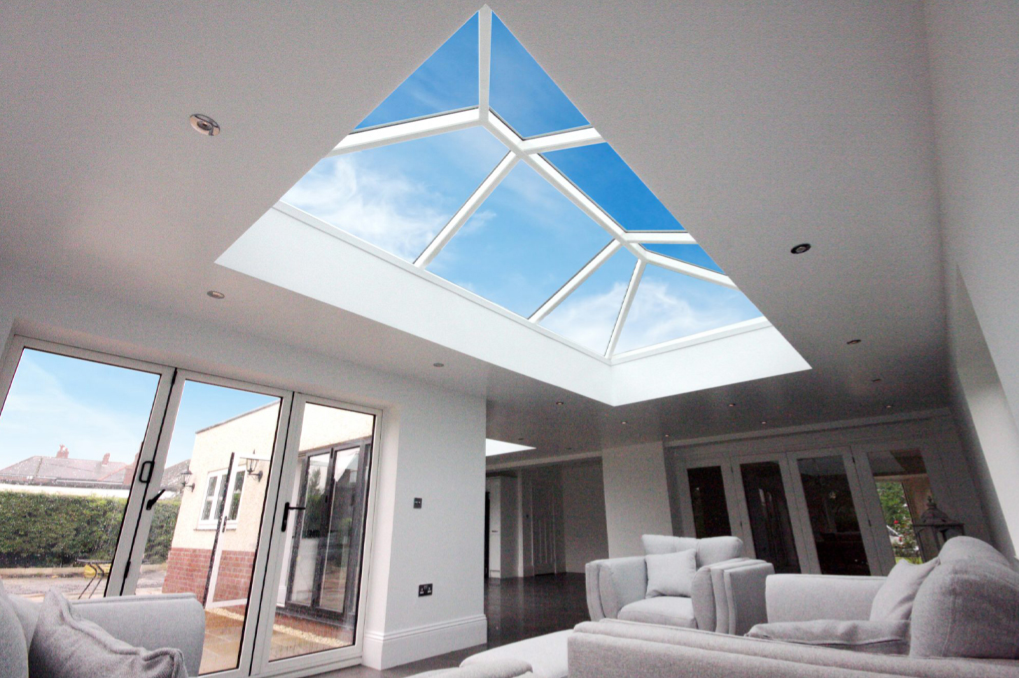A clever design detail can completely shift the way a room feels, and roof lanterns do exactly that. They bring in light from every angle, lift the ceiling, and add a sense of calm, open energy.
Whether you’re planning a kitchen extension, updating your living room, or looking to brighten a forgotten corner of the house, a roof lantern helps create a space that feels welcoming from the moment you step in.
The shape of the lantern also draws the eye upward, adding structure and balance to the room below. That soft, natural light changes the atmosphere entirely.
If you’re looking for a way to make your home feel lighter, warmer and more connected, this simple addition might be the perfect fit.
Let’s explore a few ways roof lanterns can bring that transformation to life.
KITCHENS THAT FEEL BRIGHTER AND MORE BALANCED

If there’s one space where a roof lantern makes a lasting difference, it’s the kitchen. A central kitchen lantern brings daylight into the heart of the room and works beautifully over an island, dining table or prep area.
For contemporary kitchens, slim-framed lanterns in black or anthracite pair well with handleless cabinetry, quartz worktops and metal finishes. If your kitchen leans more towards the traditional, white or soft grey frames blend easily with shaker-style cupboards, wooden floors and warm-toned details.
Glass tinting can add another layer of subtle control. Clear glass works well in north-facing rooms where every bit of light counts. In brighter kitchens or south-facing extensions, a grey or blue tint can soften glare while still keeping things bright.
ADDING LIGHT & ARCHITECTURAL ELEGANCE TO ORANGERIES

Orangeries are a natural fit for roof lanterns. With their solid roofs and perimeter windows, they offer a different atmosphere from fully glazed conservatories. They’re cosier, more permanent, and easier to use all year round, but without overhead glazing, they can sometimes feel a little enclosed.
A roof lantern solves that by pulling in light from above and making the centre of the space feel taller and brighter.
In classic orangeries, white or cream frames with a slightly more traditional pitch keep things elegant. For contemporary garden rooms, darker frames can tie in with bi-fold doors and bring a crisp contrast against brick or render.
EXTENSIONS THAT FEEL MORE CONNECTED

Extensions are often where family life happens, but without the right design choices, these spaces can feel tacked on or underused. A roof lantern fixes that by introducing natural light into the centre of the room. It helps the space feel more cohesive, like a true extension of the home, not just an add-on.
Aligning your lantern with a key feature like a seating area, a long dining table, or a walkway between zones will give the space rhythm and flow.
If your extension has black or grey-framed doors, you can match the lantern frame for a clean, unified look, or go with a lighter option to create a gentle contrast against exposed brickwork or pale plaster.
LIVING ROOMS THAT FEEL CALM AND OPEN

In a lounge or snug, a well-proportioned lantern can make the room feel taller, softer and more welcoming. You might use it to draw focus to a central coffee table, or to lift the ceiling above a favourite sofa.
In period properties, a white or heritage-green frame sits comfortably with picture rails, fireplaces and ceiling roses. In more contemporary settings, black or bronze frames echo light fixtures, media units or shelving.
CHOOSING A STYLE THAT WORKS WITH YOUR INTERIOR
One of the strengths of a roof lantern is its flexibility. The same basic structure can feel completely different depending on how it’s styled.
For clean-lined interiors, look for slim profiles in darker finishes. These pair well with bold shapes, minimal furnishings and uncluttered spaces.
Traditional homes benefit from softer tones and wider frames. Decorative ridge details or internal bars can add subtle charm, especially when echoed in window joinery or built-in cabinetry.
If your interior has a bit of an industrial edge, you might choose a black-framed lantern with grey-tinted glass, surrounded by exposed brick and brushed metal accents.
For something more natural and Scandinavian in feel, white or pale grey frames work well with wood floors, linen textures and plenty of greenery.
THINKING ABOUT THE CHARACTER OF YOUR HOME
Every roof lantern sits within a wider architectural story. In period homes, choosing a lantern with proportions that reflect the original roofline helps preserve the character of the building. White frames and soft glazing give a sense of continuity, while still introducing something fresh.
For newer builds or additions, lanterns with low profiles feel more intentional. They mirror the simplicity of the space and can be used to line up with sliding doors, flooring lines or external features.
In barn conversions or countryside homes, a larger roof lantern can help link the inside with the landscape beyond. A natural, muted or warm frame colour sits quietly alongside timber beams or stone walls, letting the view and the light take centre stage.
When a space has unique dimensions or features to work around, a bespoke roof lantern allows you to tailor the design to fit beautifully.
GIVE YOUR LIVING SPACE A LIGHT MAKEOVER
A roof lantern can transform a space without changing the layout. It brings light to the centre of the home, opens up the ceiling, and adds a quiet sense of balance, no matter the time of day or season.
If you’re planning a renovation or just thinking ahead to what’s possible, it’s worth spending a little time on the details. The frame colour, glazing tint, and shape of your roof lantern all play a part in how your living space feels. When chosen well, that one detail can make all the difference.
Contact us today to discuss your ideas or for guidance on finding the right style and size roof lantern for your space.

